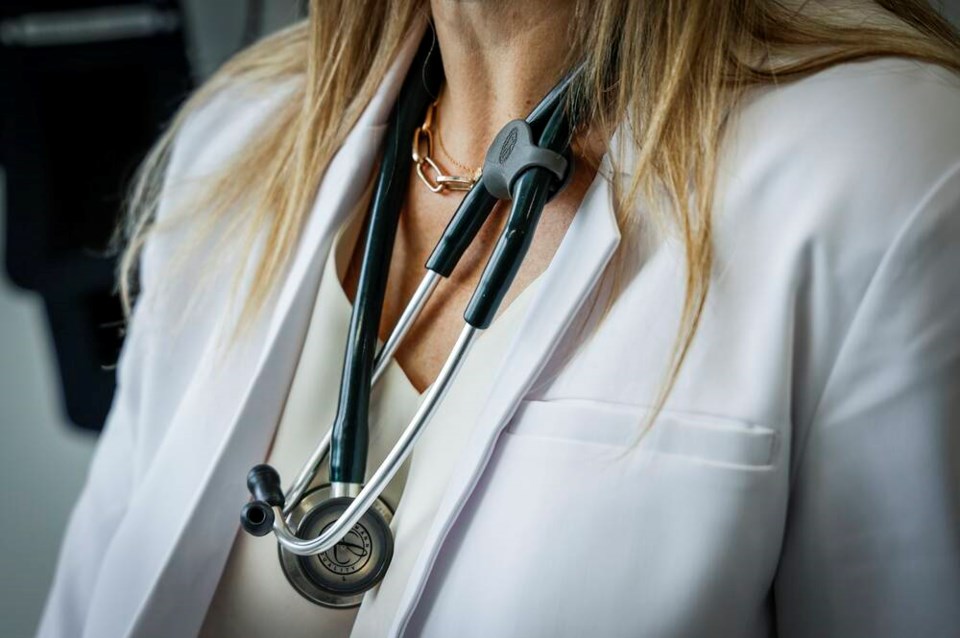Nearly one million people in saąúĽĘ´«Ă˝ don’t have a family doctor — roughly one in five.
Health experts say having a primary care provider is better as they can get to know you and your medical history, monitor changes in your health through the years and provide continuity of care.
The saąúĽĘ´«Ă˝ College of Family Physicians suggests ways to look for family doctors, including:
• Registering for a family doctor or nurse practitioner at the , available at healthlinkbc.ca/health-connect-registry.
• Checking with your local Division of Family Practice ().
• Visit the Pathways Medical Care Directory at .
• Ask family and friends if their doctors are accepting new patients.
• Check with your neighbourhood clinics to see if they have waiting lists.
If you’re still searching for a family doctor and have a medical concern, here are your options.
Walk-in clinics
If you don’t have a family doctor, you can visit a walk-in clinic. HealthLinkBC, a provincial telehealth service, has a , including walk-in clinics, hospitals and emergency departments. HealthLinkBC can be accessed online at .
You can also use to find a walk-in clinic near your area.
As the name implies, most walk-in clinics don’t take appointments and take patients on a first-come, first-served basis. Unlike at a family practice clinic, where you’ll have a doctor for continuous care, you may not see the same physician each time you visit the clinic, as most walk-in clinics have multiple doctors who work on a rotating schedule.
Sometimes clinics offer a walk-in and family practice hybrid. Ask your walk-in clinic provider if they’re accepting new patients or if you can get an appointment with one of the clinic’s doctors.
Tip: Be prepared for long waits and go early. Some walk-in clinics may close early.
Urgent and Primary Care Centres
If it’s not an emergency but you need medical attention within the day, Urgent and Primary Care Centres are an option.
The provincial government set up UPCCs with the goal of providing care for people with non-life-threatening conditions who need to see a health-care provider within 12 to 24 hours but don’t need an emergency department.
Some examples of conditions that can be treated at the centres include: Cuts that need stitches; skin, sinus or lung infections; and new mental-health issues.
Island Health operates seven UPCCs — six in Greater Victoria and one in Nanaimo:
• Downtown Victoria Urgent and Primary Care Centre — 1107 Pandora Ave., Victoria
• Gorge Urgent and Primary Care Centre — 63 Gorge Rd. East, Victoria
• James Bay Urgent and Primary Care Centre — 547 Michigan St., Victoria
• North Quadra Urgent and Primary Care Centre — 100-4420 Chatterton Way, Saanich
• Esquimalt Urgent and Primary Care Centre — 890 Esquimalt Rd., Esquimalt
• Westshore Urgent and Primary Care Centre — 682 Goldstream Ave., Langford (St. Anthony’s Treatment Centre)
• Medical Arts Urgent and Primary Care Centre — 102-650 Terminal Ave., Nanaimo (Port Place Mall)
For information about UPCCs in other parts of saąúĽĘ´«Ă˝, visit HealthLinkBC’s directory at .
Emergency departments
For after-hours when walk-in clinics and UPCCs are closed, the emergency room may be the only place to go for treatment. Waiting times can be long. Patients are assessed by a triage nurse and are seen by a doctor or nurse practitioner based on the assessment.
Always go to the ER if you have been in a major accident or for potentially life-threatening symptoms, such as trouble breathing, severe abdominal or chest pain/pressures, weakness or tingling on one side of your body, loss of consciousness or heavy bleeding.
But HealthLinkBC suggests that walk-in clinics or UPCCs for those with non-emergency health questions and concerns.
Pharmacists
In recent years, saąúĽĘ´«Ă˝ gave pharmacists more prescribing powers, a move meant to address a shortage of family doctors that make it difficult for patients to refill prescriptions.
Pharmacists can now prescribe medication for a number of minor ailments, including acne, allergic rhinitis, conjunctivitis, dysmenorrhea, fungal infections, gastrointestinal disorders, headaches, hemorrhoids, nicotine dependence, urinary tract infections and others.
811
, is a great resource for people who need health information, and who want to talk to a health professional instead of just Dr. Google.
The free service is available around the clock across saąúĽĘ´«Ă˝ When you call, a health service navigator will connect you with a registered nurse, registered dietitian, a qualified exercise professional or a pharmacist, depending on your need.
To connect with the service, call 811.
— With a file from the saąúĽĘ´«Ă˝



